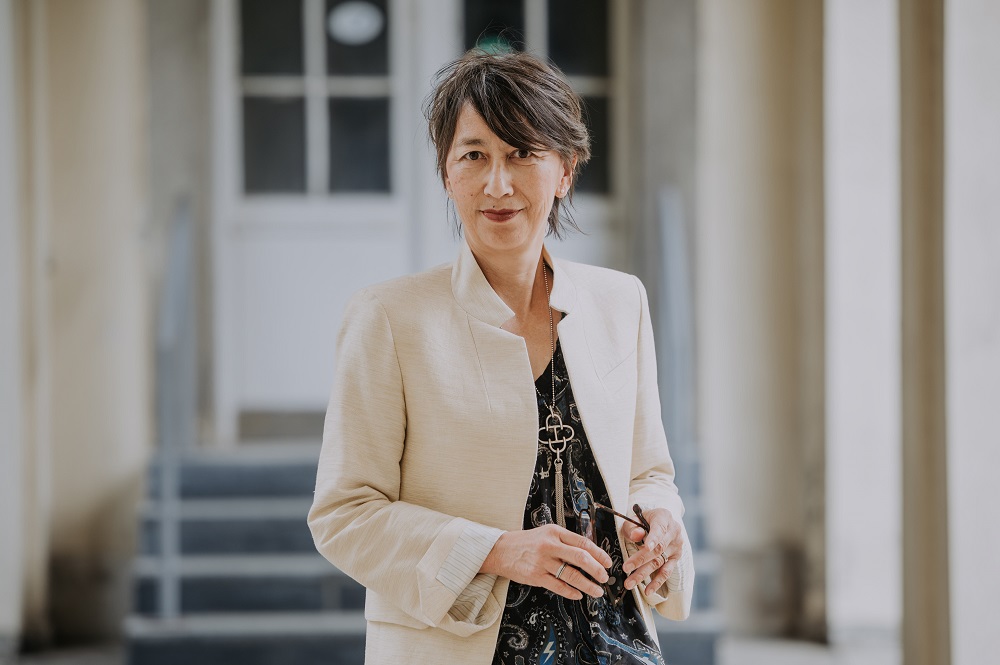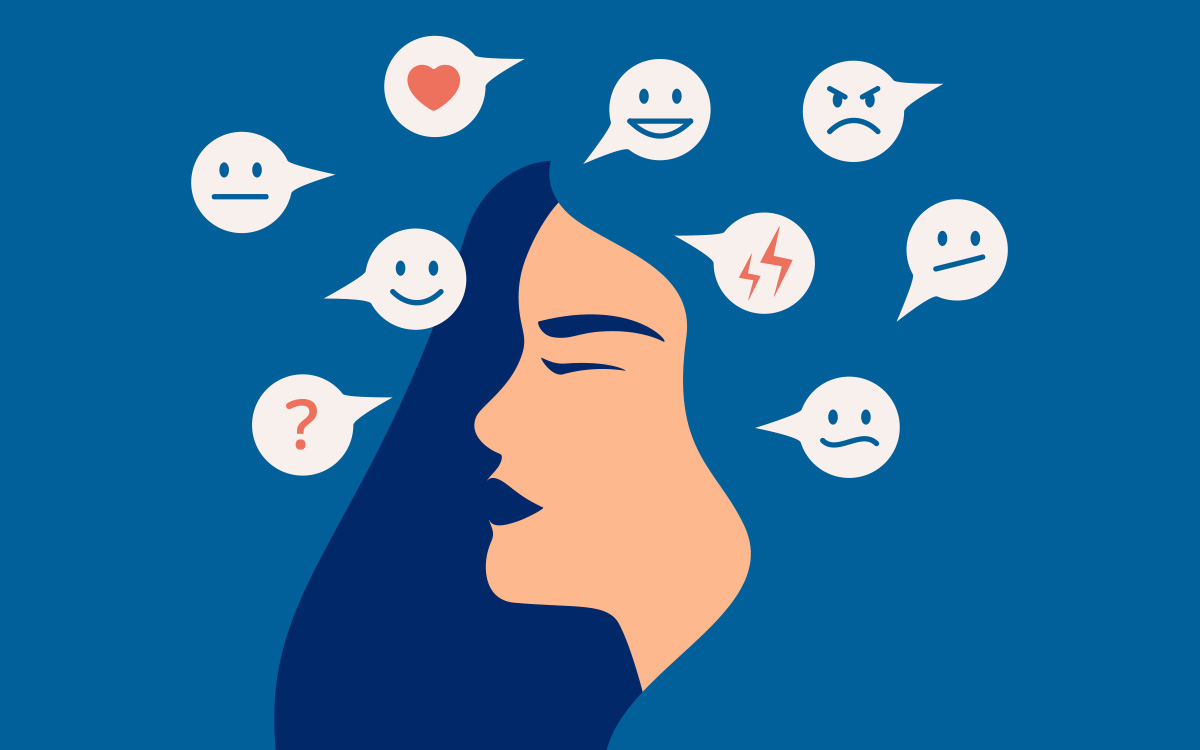It takes a village to raise a child – and a global village to make a successful business. The lingua franca of this global village? Emotional intelligence. As part of our series on this essential skill, ESCP takes a closer look at how harnessing our differences can redefine traditional expectations of how we interact at work. Today, we take a closer look at how the generation game plays out in the workplace, for better or for worse, and how emotional intelligence can act as the glue businesses need to bring their teams together.
The working world is dead; long live the working world. Almost a quarter of a century ago, Ron Zemke’s seminal 1999 work ‘Generations at Work: Managing the Clash of Veterans, Boomers, Xers, and Nexters in Your Workplace’ set the stage for today’s culture clash in no uncertain terms: “There is a problem in the workplace – a problem of values, ambitions, views, mindsets and demographics.” 25 years on, the balance has continued to shift, with study after study confirming that today’s young workers expect their jobs to align with their wider personal expectations, to the incomprehension of their parents’ generation. A cultural, technological and educational gap that appears impossible to bridge – almost.
Incompatible expectations: finding common ground between Boomers and Millenials
With the average retirement age skyrocketing around the globe even as the myth of the ‘company man’ fades into obscurity, we’re working longer and harder than ever before. Millennials may be used to the idea of jumping jobs and slashing skills, but the older generation certainly aren’t, with workers in their fifties averaging over ten years’ tenure per role (vs. 4.9 years for 35-44 year olds). Add to this the dizzying rise of digital tech, the work-from-home revolution and the global war for talent, and it’s hard to view intergenerational interactions at work with anything other than an apprehensive eye. So, how can we walk the fine line between creating a workplace that seeks to embody certain values while remaining conscious of teams’ differing life experiences?
Diversity brings conflict and friction – and friction between different ideas ignites creative problem-solving.
Véronique Tran

Different experiences, similar goals: how EQ can bridge the generational gap
Rejecting the somewhat bleak picture painted by Zemke at the close of the century, many experts argue that employees, regardless of age or job status, continue to seek similar things from their job: fulfilment, satisfaction, inclusion, and respect. For Professor of Organisation Psychology and Executive Vice-President of Executive Education & Corporate Relations Véronique Tran, this common ground is the glue that holds the workplace together. For Véronique, diverse experiences don’t necessarily mean dissimilar values: “Teams with a variety of backgrounds bring different points of view, which help us to solve problems in a more creative way, create products and services that respond to diverse customers’ needs, and make the workplace a pleasant place to be.”
For many experts, emotional intelligence (EQ) is the secret to marshalling the power of these experiences – and there’s no place like the workplace for bringing it out. Unlike certain hard skills, emotional intelligence is most visible when working in a team. Skills associated with high EQ, such as communication, empathy, active listening, and the ability to motivate and lead are essential for placing teams’ common goals, rather than their differences, at the centre of the workplace conversation.
Yet just as stereotypes surrounding gender, ethnicity and ability can seep into the workplace, the classic caricature of intergenerational tension at work tends to involve hard-headed Baby Boomers or early Gen Xers, who didn’t grow up in a digital landscape, pitted head-to-head with lazy or burned-out Millennials. There might be a grain of truth to this, but it belies the bigger picture about what’s likely to happen in the workplace in years to come.
Businesses and organisations need the energy of the next generation to tackle some of today’s greatest challenges and to share their unique understanding of the problems we’re facing today.
Véronique Tran
EQ: shaping a positive mindset in an uncertain world
By 2025, roughly 75% of the world’s workers will be Millennials, with GenZ coming up fast. While today’s under-25s are at ease with social media and digital tools, they also report significant levels of eco-anxiety, mental health concerns and depression, having grown up in a context of climate change and social justice movements. For Véronique: “Younger workers need to be particularly encouraged to train their emotional regulation and regain a positive outlook. Businesses and organisations need the energy of this generation to tackle some of today’s greatest challenges and to share their unique understanding of the problems we’re facing today. To achieve this, current Baby Boomers and Millennials will need to develop their own EQ to support their younger peers.”
Easier said than done, of course. As social animals, humans are all born with a certain amount of emotional intelligence – but developing one’s EQ requires consistent mental effort, not dissimilar to learning a foreign language. Véronique agrees:
“From unconscious bias to overt discrimination, there are thousands of reasons why it is so hard for us to embrace diversity. The human brain is wired to opt for what’s familiar, what conforms to social norms – which means committing to diversity takes serious effort. Teams that think and work alike certainly solve problems very efficiently, but they do so without questioning the way they do it. Diversity brings conflict and friction – and friction between different ideas ignites creative problem-solving.”
Creative problem-solving, or the art of bringing teams together
So, what can this positive friction look like? A recent study spanning Boomers, Gen X, Millennials and Gen Z at work found that coaching was by far the most effective way of promoting intergenerational contact. Mentoring, discussion groups and ‘shadowing’ can help with each generation’s sense of satisfaction, allowing younger team members the chance to discuss and reevaluate while reflecting older team members’ affinity with directed leadership and teamwork.
Similarly, taking cues from colleagues who’ve lived or worked abroad can help team members to reframe their interpretation of certain behaviours – a complementary skill known as cultural intelligence or ‘CQ’. Instead of reinforcing and sharing negative stereotypes about Millennials’ “lazy” desire for flexible working hours or Boomers’ “corporate” attitude to feedback and hierarchy, it’s important to look at the cultural context that led to these attitudes. By adjusting our expectations and appreciating that each generation has its own approach to achieving satisfaction at work, we become better able to understand what motivates us individually: a hallmark of strong EQ.
From workshops and team-building sessions to diversity training and HR policy, management can certainly play an important role in fostering a pro-EQ environment at work, but for Véronique, it’s up to individuals to take a conscious interest in developing this essential skill. “I’m definitely a fan of team building programmes and personality or team profile questionnaires, which – as cliché as it may sound – are often very useful in helping people to appreciate differences in other people. When it comes to unconscious bias that can cause friction when it comes to gender and ethnicity, diversity and human rights officers can play an important role, but given that EQ’s first step is self-awareness, it’s fundamental that we each question and fight against these biases within ourselves on a personal level, so that we consciously embody the changes we seek to make.”
License and Republishing
The Choice - Republishing rules
We publish under a Creative Commons license with the following characteristics Attribution/Sharealike.
- You may not make any changes to the articles published on our site, except for dates, locations (according to the news, if necessary), and your editorial policy. The content must be reproduced and represented by the licensee as published by The Choice, without any cuts, additions, insertions, reductions, alterations or any other modifications.If changes are planned in the text, they must be made in agreement with the author before publication.
- Please make sure to cite the authors of the articles, ideally at the beginning of your republication.
- It is mandatory to cite The Choice and include a link to its homepage or the URL of thearticle. Insertion of The Choice’s logo is highly recommended.
- The sale of our articles in a separate way, in their entirety or in extracts, is not allowed , but you can publish them on pages including advertisements.
- Please request permission before republishing any of the images or pictures contained in our articles. Some of them are not available for republishing without authorization and payment. Please check the terms available in the image caption. However, it is possible to remove images or pictures used by The Choice or replace them with your own.
- Systematic and/or complete republication of the articles and content available on The Choice is prohibited.
- Republishing The Choice articles on a site whose access is entirely available by payment or by subscription is prohibited.
- For websites where access to digital content is restricted by a paywall, republication of The Choice articles, in their entirety, must be on the open access portion of those sites.
- The Choice reserves the right to enter into separate written agreements for the republication of its articles, under the non-exclusive Creative Commons licenses and with the permission of the authors. Please contact The Choice if you are interested at contact@the-choice.org.
Individual cases
Extracts: It is recommended that after republishing the first few lines or a paragraph of an article, you indicate "The entire article is available on ESCP’s media, The Choice" with a link to the article.
Citations: Citations of articles written by authors from The Choice should include a link to the URL of the authors’ article.
Translations: Translations may be considered modifications under The Choice's Creative Commons license, therefore these are not permitted without the approval of the article's author.
Modifications: Modifications are not permitted under the Creative Commons license of The Choice. However, authors may be contacted for authorization, prior to any publication, where a modification is planned. Without express consent, The Choice is not bound by any changes made to its content when republished.
Authorized connections / copyright assignment forms: Their use is not necessary as long as the republishing rules of this article are respected.
Print: The Choice articles can be republished according to the rules mentioned above, without the need to include the view counter and links in a printed version.
If you choose this option, please send an image of the republished article to The Choice team so that the author can review it.
Podcasts and videos: Videos and podcasts whose copyrights belong to The Choice are also under a Creative Commons license. Therefore, the same republishing rules apply to them.





